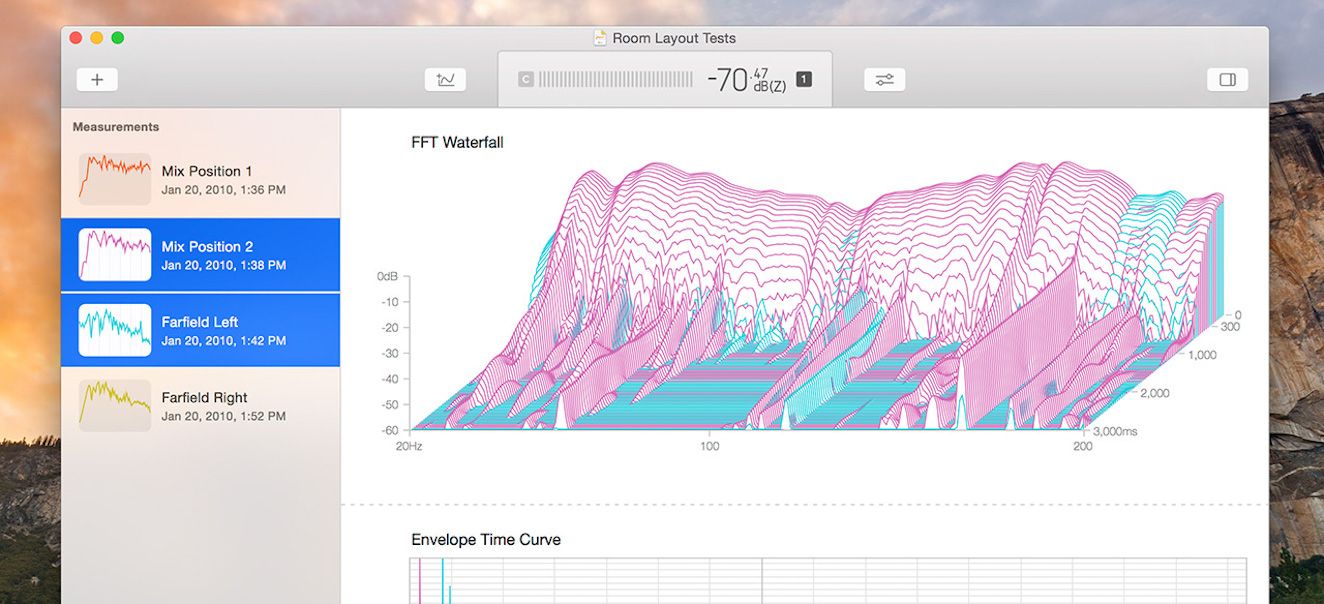
Anti-Nodes is the opposite of this (affectively the gaps) where the sound is louder in certain spots of the room. These nodes can be along any axis in the room (any where in the room at any height at equal intervals). Nodes are where the sound waves from all 3 axis’ intersect, at equal intervals, creating a dead spot in the room. Standing waves are a problem because they create hot spots in the room (nodes). (the line through the box represents the standing sound wave). After this you would take all of the fundamental frequencies and there harmonics and put them in a table, the frequencies that occur more than once across the 3 axis are the rooms axial problem frequencies This is because the problem frequencies are the waves that stand in the room perfectly and when they overlap they create nodes e.g. Next do the calculation, speed of sound (344m/s)÷ wavelength= fundamental frequencies. To work out the problem frequencies in a room you need to first double the height, width and length measurements to get the standing wave length on each axis.

The measurements for the room excluding the small protruding box were: This mode looks something like the Tangential Mode, except instead of just moving around on a flat plane, it bounces off of the ceiling and floor on it’s way around. They involve all six surfaces of a room, and have about half the energy of Tangential Modes, one quarter of the energy of Axial modes. Oblique Modes are the hardest to explain. It will leave the wall at the angle it hit it and carry on around the room. So imagine throwing a ball at a wall at an angle and it bouncing around. Tangential Modes involve four surfaces (two sets of parallel walls) and have about half the energy of Axial modes.Sound is like a rubber ball it bounces off a surface at about the same angle it arrives at. Imagine a reflective room, take a torch and point it directly at the wall and it will bounce back and forth between the two walls. This is because we are most interested in the axial modes, because they are the strongest modes, not tangental modes nor oblique modes.īrief explanation of different types on modes.Īxial Modes involve two parallel walls. For the sake of this experiment we will be disregarding the the small box shape down one side of its lengths from the measurements. The Performance space is a big rectangular shaped room with a small protruding box shape down one of its lengths.

Here is all the equipment used, together on the Fuzz Measure trolly. The dimensions of a room affect how something sounds in it.
Fuzzmeasure crack software#
The software is used to analyse a rooms’ decay time and the frequencies that are absorbed by the room.
Fuzzmeasure crack how to#
The process of how to use Fuzz Measure, how it works and what it does will be explained later, worry not! This would give a more sensitive deflection reading). I did this by putting the computer in one corner with PA speaker facing out into the room underneath it and an omnidirectional measurement microphone (Behringer emc8000) in the opposing corner (not fully in the corner. I analysed two different shaped rooms (Project room 6 and The Performance Space) using a piece of software called Fuzz Measure on a Macbook computer.


 0 kommentar(er)
0 kommentar(er)
